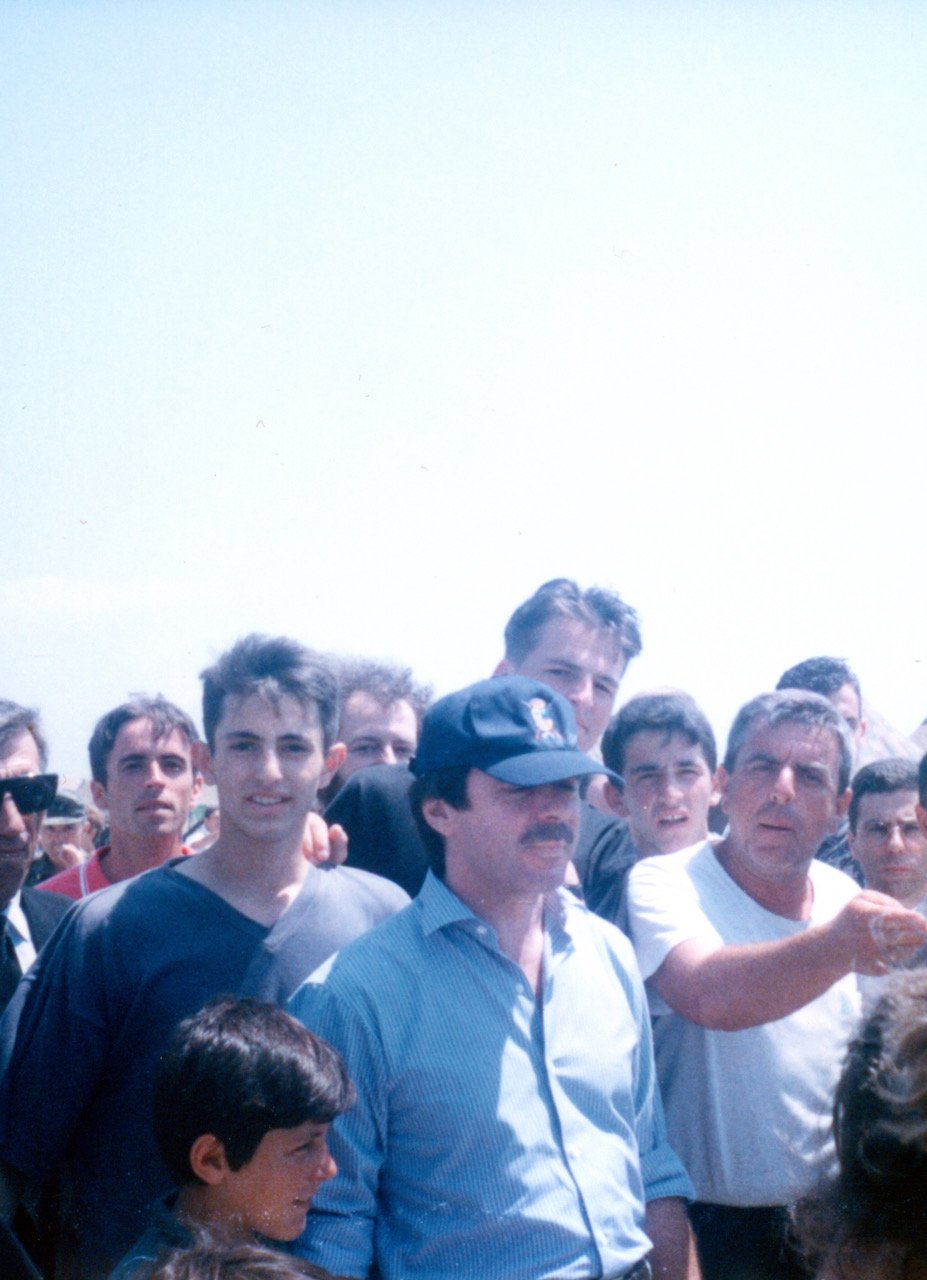
Twenty years ago, the last 20th-century war in Europe ended in Kosovo after thousands of people were killed or displaced by the conflict resulting from the breakup of Yugoslavia. The artist Alban Muja, who became a young refugee during that war, will be representing Kosovo this year at the Venice Biennale.
On the 20th anniversary of the NATO airstrikes that forced Yugoslav forces to withdraw and allow a UN peacekeeping mission to begin, the artist and the curatorial team behind the Kosovo Pavilion gathered in the capital of Prishtina. They announced Muja’s deeply personal and political project, which will meditate on the way photographs of conflict can tumble through contexts, especially when it comes to the narratives around child refugees.
The Kosovo Pavilion is curated by Vincent Honoré, the director of exhibitions at MoCo Montpellier and the artistic director of the Baltic Triennial last year. It is commissioned by Arta Agani, the director of the National Gallery of Kosovo. It will be the fourth time is Kosovo participating with an official pavilion in Venice.
Muja, who is 39 and currently based in Prishtina, explores political and social transformations in his home country of Kosovo and the surrounding region using films, drawings, paintings and performances. This project marks the first time he has done work directly about the conflict. An image circulating with the pavilion’s official release shows a young Muja at a refugee camp in 1999. He is pictured looking directly at the camera.
Muja and his family had been separated when fleeing their home city of Mitrovica. His father had been arrested and taken to prison by Serbian forces. The family was reunited at the refugee camp.
For the project, Muja will create a three-part video installation called Family Album, which interweaves the stories of three people who were also displaced as refugees during the war in Kosovo when they were children. “The work echoes the current states of crisis and migrations, as well as the [impersonalization] of mass media,” Honoré says.
For each video, Alban interviewed the three subjects, whose images became emblematic of the conflict. Honoré says that the videos unravel how these media images were first taken, as Muja pulls in each of the refugees’ personal contexts by way of interviews.
“We decided not to show the source images but to focus on the present time and on the voice of the persons and their relationships to these photographs,” Honoré says. “The work highlights the problematic circulation of images, their relationships a document and aesthetics, and to the persons photographed.” He says that one of the aim of the project is to find the personal aspect of images that “sadly became neutralized due to wide global circulation.”
NATO carried out the air strikes after talks with the Serbian leader Slobodan Milošević failed to bring an end to his brutal crackdown on Kosovar Albanians. The massacres and of thousands of thousands of people led to Milošević’s trial at The Hague. He died in custody in 2006. The Kosovo War was the largest forced displacement of people in Europe since World War II.